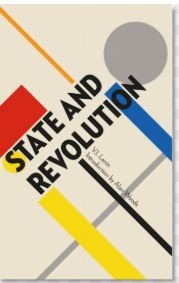Has the Chinese communist party adopted Lenin’s New Economic Policy (NEP)?
Branko Milanović is an economist specialised in development and inequality. His newest book is “Capitalism, Alone: The Future of the System That Rules the World”. His new book, The Visions of inequality, was published October 10, 2023
Cross-posted from Branko Milanović’s blog

When in April 1917 he was in hiding in Finland from the Provisional Government’s arrest warrant Lenin wrote his pamphlet entitled The State and Revolution. In it, Lenin undertook to defend the forthcoming violent take-over of the state by the Bolsheviks using Marx’s and Engels’ writings on the advent of socialism and on the Paris Commune. He also charted in great detail the system that would follow upon the socialist revolution in Russia. In the economic sphere, it will be nationalization of the means of production, the abolition of private property, and centralized decision-making. In the political sphere, it will be the dictatorship of the proletariat and the power of the Soviets. The dictatorship of the proletariat is here to be understood in its social context in the same way that all capitalist regimes are, according to Marx, dictatorships of capitalists, regardless of whether they have a multi-party democratic cover or are ruled by authoritarian governments. Strictly speaking, the dictatorship of the proletariat, as discussed by Lenin, is compatible with the multi-party system as well as with the single party system.
In April 1922, exactly five years later, Lenin, now the head of the Soviet government, gave his last long speech to the 11th Congress of the Russian Communist Party. In it, he defended the New Economic Policy (NEP) that was largely pro-capitalist and under attack by several powerful wings of the Bolshevik party (the so-called Workers’ Opposition led by Shlyapnikov, and by the partisans of forced industrialization represented by Preobrazhensky). The NEP policies were the very opposite of the policies Lenin outlined in 1917.
There are several things to note by comparing the two documents. The first is the evolution of Lenin’s thinking during these five years which shows him to be a brilliant politician. While maintaining the final objective, he entirely changed his tactics as the circumstances evolved. Next is the relevance of the two texts to the contemporary conditions. The State and Revolution can be read as a manual of how to take over the state and change its internal texture. While the Trumpist revolution in the United States does not have the class content that Lenin envisaged for the Soviet revolution, DOGE is involved in a similar attempt to change the deep ideology of the state and to make the new state follow the interests of new rulers. Lenin explains:
Revolution consists in … destroying the ‘administrative apparatus’ and the whole state machine, replacing it by a new one…
and
Abolishing the bureaucracy at once, everywhere and completely, is out of the question. It is a utopia. But to smash the old bureaucratic machine at once and to begin immediately to construct a new one…this is not a utopia.
The 1922 speech, on the other hand, can be read as a precise, and as an ex-ante laudatio of the policies pursued by the Chinese government for the past forty years: introduction of capitalism to reinforce the one-party rule and ultimately to move the society in socialist direction. It is socialism by capitalist means.
Lenin’s two texts are remarkably different in style. In The state and revolution Lenin hews very closely to Marx and especially to Engels and uses innumerable quotations to establish his adherence to the doctrine and provide a justification for the political coup d’etat. The text is replete with quotations from Engels who was more frank, or perhaps more blood-thirsty, than Marx in calling for the use of violence in revolutions. It is a dogmatic, even if excellently written, piece. It tries to convince the leading lights of the Second and the Second-and-a-Half International of Lenin’s rightness of the assessment of the Great War, and of the correctness of his call to transform the war between the capitalist states into a war of socialist revolution.
The reality of building socialism did not prove to be as easy as Lenin expected in April 1917. Thus five years later, after the Civil War, the War Communism, foreign military interventions, and the Kronstadt rebellion, Lenin’s approach to the construction of socialism changed. The speech to the 11th Congress is a remarkable by the very opposite qualities from those of The state and revolution. It is an entirely non-dogmatic document, the feature underlined not only by the absence of the quotes from Marx but, in several instances, decisive claims that the new system built in Soviet Russia is something that Marx could not imagine, did not envisage, and hence left no opinion on it. It is Paul telling Jesus he missed out a few things.
The new system could be reconciled, as Lenin then and the Chinese Communist Party today argue, with Marxist doctrine by pointing out that the socialist revolutions took place in the less developed parts of the world and required different means than those thought by the Euro-centric Marxists:
Are the social and economic conditions in our country [Russia] today such as to induce real proletarians to go into the factories? No. It would be true according to Marx; but Marx did not write about Russia; he wrote about capitalism as a whole, beginning with the fifteenth century. It held true over a period of six hundred years, but it is not true for present-day Russia.
Or, again,
All the more or less intelligible books about state capitalism that have appeared up to now were written under conditions and in a situation where state capitalism was capitalism. Now things are different; and neither Marx nor the Marxists could foresee this. We must not look to the past.
The main aim of the 1922 speech was to defend the introduction of capitalist relations of production in Soviet Russia. These relations came in two shapes: allowing small peasant holdings and commodity production in the countryside and private trade with the cities; and letting foreign capital in via joint enterprises owned by the Soviet state and foreign capitalists. Both are obvious departures from the idea of socialization of the means of production and centralized planning enunciated by Lenin five years earlier.
In 1922, state capitalism was the order of the day. In an ideological tour de force Lenin distinguishes state capitalism under capitalist conditions from state capitalism under socialist conditions. In the former, the state takes some of the power from the private sector in order to better maintain the dictatorship of capital; in the latter, the political power is firmly in the hands of the Communist party but many economic functions are delegated to capitalists in order to increase overall output. State capitalism is but a transitional stage towards socialism. This is what the Chinese Communist Party has been saying since the reforms started in 1978. Even the structure of what was reformed in China is like what Lenin argued for in 1922. Early Chinese reforms included decollectivization of agriculture and opening up of the economy to the private sector and foreign capital.
But while NEP is, according to Lenin, necessary for economic reasons, it must never lead to the control by capitalists over the political decision-making. The latter must remain centralized in the hands of the Communist Party. “State capitalism is capitalism which we shall be able to restrain, and the limits of which we shall be able to fix”.
State capitalism is a transitory stage, which once the forces of production have been unleashed and much greater income has been achieved, could be turned off, reversed, and replaced by the original socialist policies. In other words, state capitalism is seen as an extra stage in the development from capitalism to socialism, necessitated by the fact that socialist revolutions occurred in less developed countries.
State capitalism is not time-bound. The only time-bound element provided by Lenin is the need for policies to last until the Communist cadres “learn” how to operate the economy much better, that is, to be as efficient as capitalists. Lenin’s view is thus not incompatible with state capitalism lasting one hundred years, as Deng Xiaoping indeed predicted—or even more: the “cadres” not learning capitalist management techniques fast enough. This in no way implies the Party deviating from the final objective of the socialization of the means of production. It is a capitalism that can last for an indefinite period under the ever-vigilant eye of the Communist Party.


The Internationale is alive, if a little unwell. No surprises there. The battle is won, but the war is in the balance. How now? Marry the sovereign nation-states to international Good relations? “Good” meaning “respect each other”. How to live and work together without scheming and stealing; a seemingly impossible task.